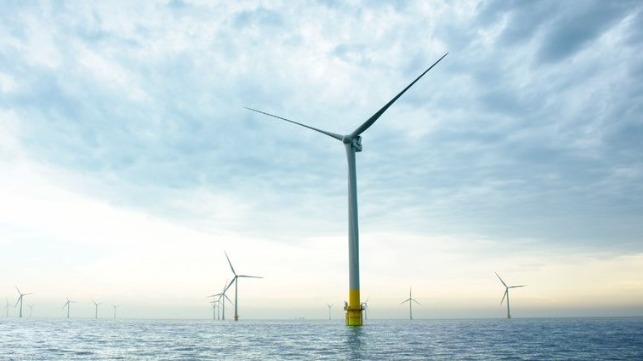Shell and Mitsubishi to Build Dutch Wind Farm with Ecological Elements

A consortium of Shell and Eneco, a division of Mitsubishi, won the tender to develop the Netherlands’ next offshore wind farm in an area known as Hollandse Kust (west) located more than 30 miles off the west coast of the Netherlands. Like a second lease awarded last month to RWE for the second lot in the area, these new projects seek to incorporate innovations to enhance the performance of the wind farm and its broader environmental impact.
Shell and Eneco established a joint venture, Ecowende, to build and operate the offshore wind farm in the Dutch waters. It will be Enecos’ fifth offshore wind project in the Netherlands, bringing its gross capacity of offshore wind to 2,500 MW. The new project to be located in an area designated Lot VI will have an installed capacity of approximately 760 MW. Shell and Eneco have already taken the final investment decision for the wind farm and expect it to be operational in 2026.
"With Ecowende, we will take a huge step in growing our offshore wind portfolio while making a positive contribution to biodiversity,” said Wael Sawan, Director of Integrated Gas, Renewables and Energy Solutions at Shell. “Through this project, we can profitably accelerate the large-scale roll-out of offshore wind in the Netherlands and beyond."
The Netherlands completed the process to define the two new permit areas in late 2021 and opened the process for applications in the spring of 2022. They reported receiving 49 applications for Hollandse Kust (west) Wind Farm Site VI. Of the 49 applications, 28 met the eligibility requirements to proceed. The highest scoring party receives the permit for Site VI to build, operate and decommission the wind farm.
Among the factors that companies were required to address in their applications was the ecological impact as criteria for the applications for the permits.
Ecowende says it aims to set a new ecological benchmark for the development and construction of wind farms in the North Sea and to enable offshore wind farms to have a net positive impact on nature in the future. The design of the wind farm takes account of the natural environment through measures such as placing wind turbines a greater distance apart to create a corridor for birds to fly through. They also plan to use innovative foundation techniques that will keep the impact on marine mammals and marine life to a minimum and place natural reef structures on the seabed to boost biodiversity. Shell said more details on the investments, innovations, and research programs will be announced at a later stage.
RWE won the second permit for the VII site. To maximize the use of the area and increase output, the new wind farm’s design incorporates the addition of batteries and a floating offshore solar energy array. RWE partnered with a Norwegian start-up, SolarDuck, which will develop the hybrid, offshore floating solar installation. It will be a 5MW demonstrator for the innovative integrated energy storage solution.
